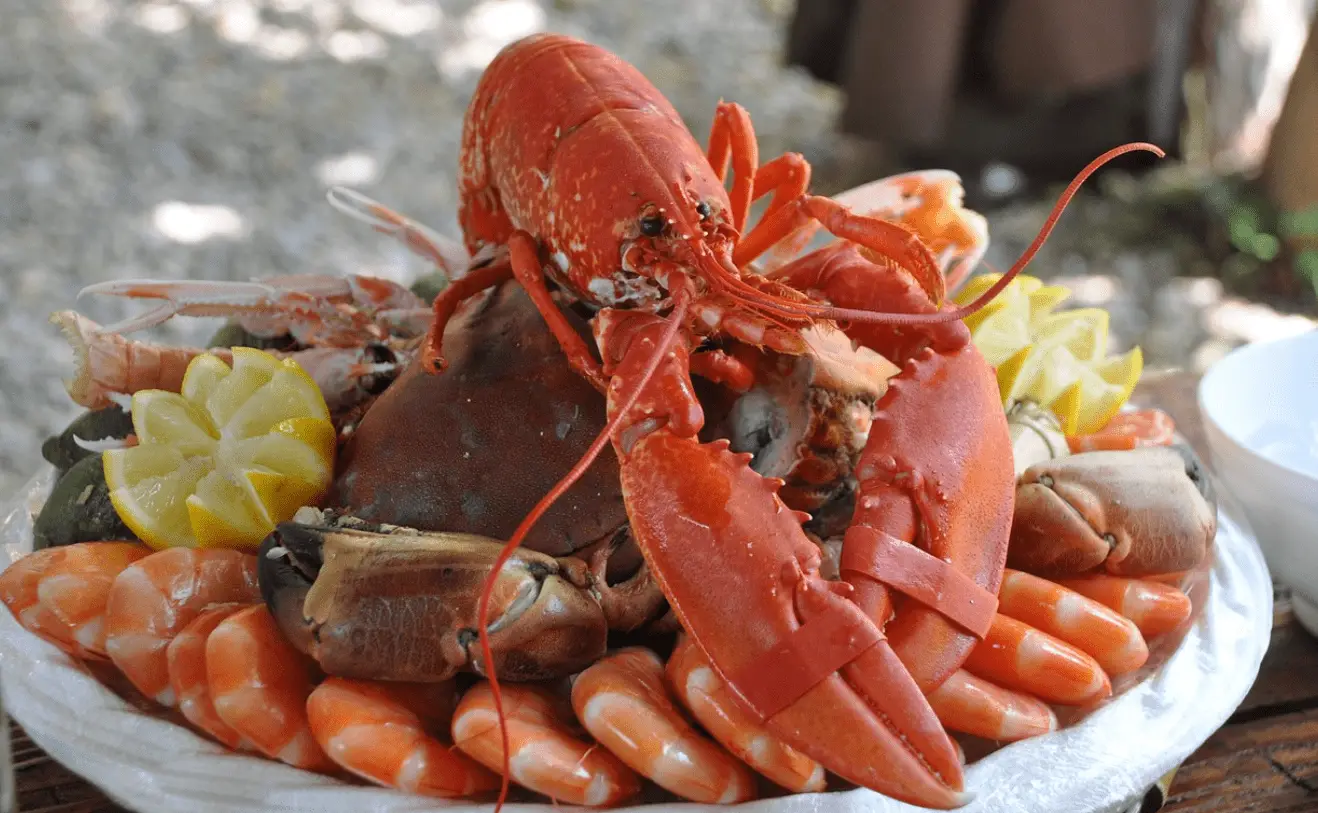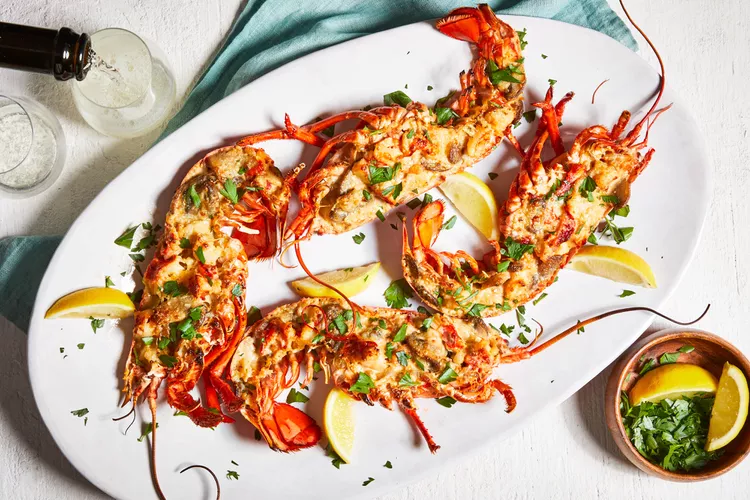
When you think of seafood, one of the first things that may come to mind is shrimp. So how many shrimps do you have to eat?
Shrimp is a trendy dish worldwide and are widely enjoyed for their unique flavor and texture. But when it comes to eating shrimp, how much do you need to eat?
This article will answer that questions and discuss how many shrimps you need to eat to receive health benefits. We will also provide tips on planning a diet that includes shrimp and other seafood so that by the end, you’ll better understand the amount of shrimp you should be incorporating into your meals for optimal health.
How Many Shrimp Do You Have To Eat?
When it comes to eating shrimp, the exact amount you need depends on various factors. The American Heart Association (AHA) recommends that adults eat two servings of seafood a week—which can include shrimp. One serving is equal to roughly 4 ounces, or about 8-10 medium-sized shrimp.
However, if you’re aiming for a specific health benefit from consuming shrimp, you should increase your intake. For example, if you’re looking to reduce your risk of heart disease, you may want to increase your seafood intake to at least 8 ounces a week — equal to about 16-20 medium-sized shrimp per week.
Although, not all shrimp are created equal. Wild-caught shrimp tend to be lower in calories, fat, and cholesterol than farm-raised shrimp. They also contain more Omega-3 fatty acids, which can help reduce inflammation and the risk of heart disease.
In addition to varying nutritional content, wild and farm-raised shrimp sizes vary greatly. It’s, therefore, essential to read labels and be aware of serving sizes to ensure you’re getting the right amount of shrimp for your health needs.
Is Shrimp Healthy?
Yes, shrimp is a healthy and nutritious seafood choice. It’s low in fat and calories but high in protein, essential vitamins, and minerals. Additionally, shrimp is rich in omega-3 fatty acids and antioxidants, making it an excellent choice for reducing inflammation and promoting heart health.
Eating shrimp can help you reach your recommended intake of essential vitamins and minerals such as Vitamin B12, iron, zinc, and selenium. It can also help you maintain a healthy weight by providing a lean source of protein.
Is Shrimp Healthier Than Fish?
In terms of health benefits, shrimp and fish are both excellent options. They both have similar nutritional profiles and provide the body with essential nutrients. However, shrimp is typically lower in calories and fat than many fish.
Additionally, some types of fish can contain higher levels of mercury or other contaminants, which can concern pregnant women or young children. For this reason, shrimp is often recommended as a safe seafood choice for these individuals.
How Much Shrimp Should You Eat Per Meal?
When it comes to how much shrimp you should eat per meal, the amount varies depending on your individual caloric needs. Generally speaking, 4 ounces of shrimp is considered to be one serving.
However, if you want to increase your seafood intake, aim for 8-12 ounces of shrimp per day, equal to 2-3 servings. That way, you’ll be able to consume enough seafood to receive health benefits while maintaining a balanced diet.
There are plenty of ways to enjoy shrimp. For a light lunch or dinner, try adding them to a salad or stir fry for added flavor and texture. You can also bake, broil, or fry shrimp for a quick and easy protein-rich meal.
How Much Shrimp Should You Eat A Day?
Again, the amount of shrimp you should eat daily depends on your calorie needs and dietary goals. Generally, the AHA recommends consuming two servings of seafood a week, equal to 8-10 medium-sized shrimp.
However, if you’re trying to reap the benefits of eating seafood and increasing your omega-3 fatty acid intake, aim for 8-12 ounces of shrimp daily. Alternatively, opt for small wild-caught shrimp instead of farm-raised if you want to limit calorie and fat intake.
No matter which type of shrimp you choose, read nutrition labels and keep track of your portion sizes for a balanced diet. This will help ensure you get the most out of your seafood consumption by receiving vital nutrients without overloading on calories.
Will I Turn Pink If I Overeat Shrimp?
No, you will not turn pink if you overeat shrimp. However, keep your seafood intake balanced with other proteins and vegetables. Overeating any food can lead to weight gain and nutritional imbalances.
Furthermore, shrimp is high in cholesterol, so limit your intake if you’re concerned about raising your cholesterol levels. If you have a history of heart disease, consult your doctor before increasing your shrimp consumption to reap the shrimp’s health benefits while keeping your dietary intake balanced.
Overall, shrimp is a healthy and nutritious seafood option that can provide the body with essential vitamins, minerals, and fatty acids. It’s, therefore, important to eat shrimp in moderation and stay mindful of serving sizes for a balanced diet.
How Many Shrimp Do I Have To Eat Before I Make My Skin Turn Pink?
No matter how much shrimp you eat, your skin will not turn pink. Eating large amounts of shrimp may raise your cholesterol levels and lead to weight gain, but it will not dye your skin. It may also cause digestive issues, so it’s important to moderate your shrimp intake.
That said, stick with the AHA guidelines of two weekly servings and consult a doctor before increasing your shrimp intake if you have any heart conditions or other health concerns. Ultimately, how much shrimp you eat should depend on your individual dietary needs and goals.
How Much Shrimp Can You Eat Before You Get Iodine Poisoning?
Iodine poisoning is rare and unlikely, even at high levels of shrimp consumption. However, it is possible to experience symptoms of iodine poisoning if you consume huge amounts of shrimp or other seafood rich in iodine.
To reduce your risk, avoid consuming more than 8-12 ounces of shrimp daily. This amount equals 2-3 servings and should be safe for most people. However, you should consult your doctor before increasing your shrimp intake if you have any health conditions.
Also, make sure to spread out your seafood consumption throughout the week to limit your iodine intake. By following these guidelines, you can enjoy the benefits of shrimp without experiencing any adverse effects.
How Much Shrimp Can You Eat Before You Get Sick?
It is unlikely that you will get sick from eating shrimp. However, consuming too much seafood can lead to digestive issues like nausea and vomiting. To reduce your risk, consume the recommended two servings of seafood per week and never exceed 8-12 ounces of shrimp daily.
Additionally, before consuming any shrimp, look for signs of spoilage, such as a foul smell or slimy texture, and spread your seafood intake throughout the week. If you experience adverse reactions after eating shrimp, seek medical attention immediately.
What Part Of The Shrimp Should You Not Eat?
Avoid consuming the intestines or the black veins running down its back when eating shrimp. This part contains bacteria and other toxins that can be harmful if ingested. It is also essential to avoid eating shrimp that has gone bad, as this may cause food poisoning.
If you’re purchasing shrimp, cook it within 24 hours and store it in a refrigerator at 40°F or lower. Lastly, wash your hands before and after handling shrimp to reduce your risk of foodborne illness. Oh, and don’t forget to enjoy your shrimp in moderation!
Why Do Shrimp Turn Pink?
Shrimp turn pink due to a reaction between the enzyme phenoloxidase and an amino acid in their bodies called astaxanthin. Astaxanthin is naturally found in shrimp but is usually hidden by proteins and other substances that mask its color.
When shrimp are cooked, the heat causes the proteins to break down, revealing the astaxanthin and giving them a pink hue. In addition, some shrimp species have carotenoid pigments, which also contribute to the pink color when heated. These pigments are natural compounds that often give fruits and vegetables vibrant colors.
In summary, shrimp turn pink when cooked due to the combination of heat and naturally occurring astaxanthin and carotenoid pigments in their bodies. There’s no cause for alarm here, as shrimp is a healthy addition to any diet.
Do Shrimps Change Skin?
Yes, shrimp do change their skin from time to time. This process is known as molting and occurs when the shrimp outgrows its exoskeleton. The shrimp then sheds its old skin and forms a new one, larger and better adapted to their environment.
Molting is a natural process for shrimp and occurs multiple times throughout their lives. The amount of time between molts varies depending on environmental factors, such as temperature and food availability.
Do Flamingos Turn Pink Because Of Shrimp?
Yes. Flamingos are born with gray feathers, but they turn pink due to their diet of shrimp and other small aquatic creatures. These animals contain carotenoid pigments, natural compounds often found in fruits and vegetables.
When flamingos consume these carotenoids, they are absorbed into the bloodstream and deposited in the feathers. This causes them to turn pink and can even give their feathers different shades of red, orange, and yellow.
Conclusion
In conclusion, aim for 8-12 ounces of shrimp per week to get the most out of this tasty seafood while avoiding potential adverse effects. Shrimp is an excellent seafood choice for its low fat and calorie content and high protein, vitamins, minerals, and omega-3 fatty acids.
Remember to check labels and research the source of your shrimp to get the most health benefits. Try incorporating shrimp into salads, stir-fries, and other dishes for a healthy and delicious meal. Lastly, avoid consuming the intestines and black veins to reduce your risk of foodborne illness.

